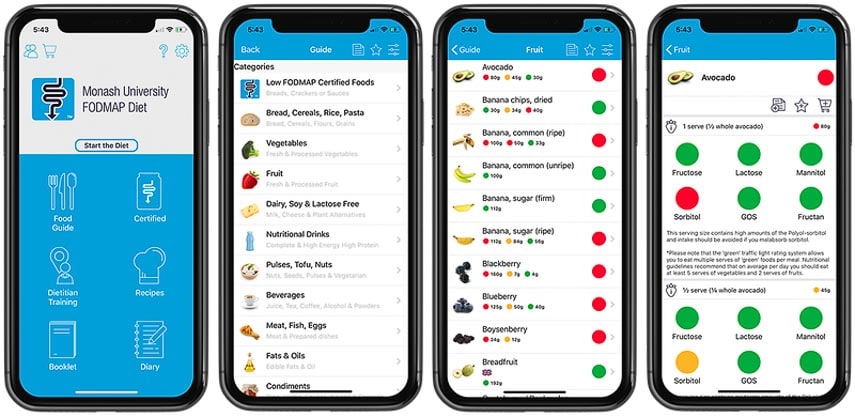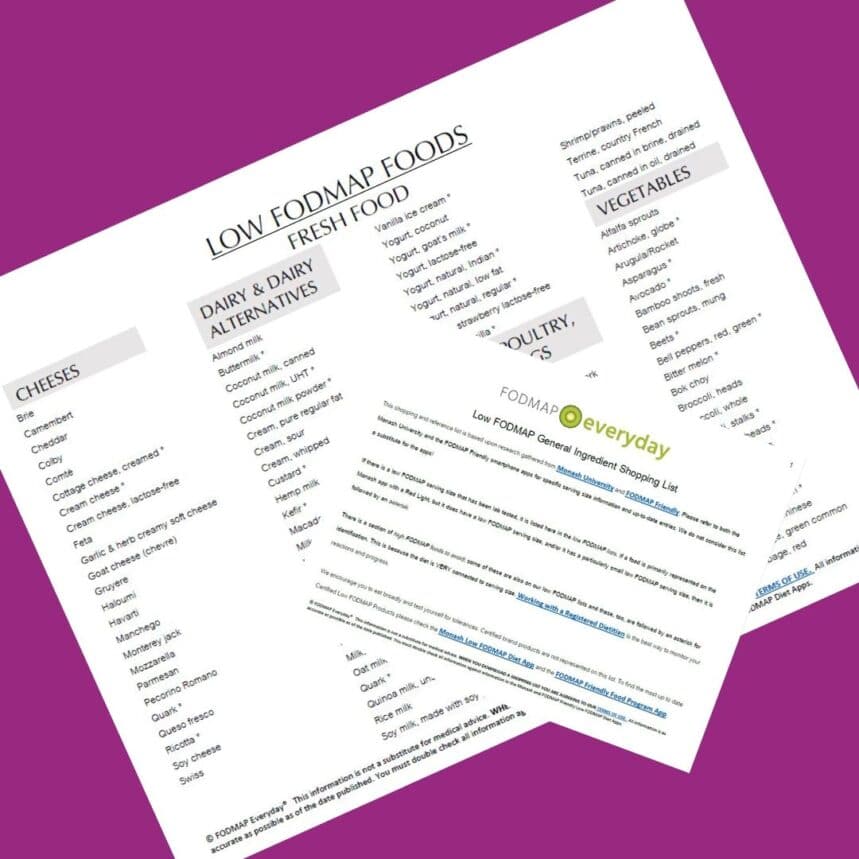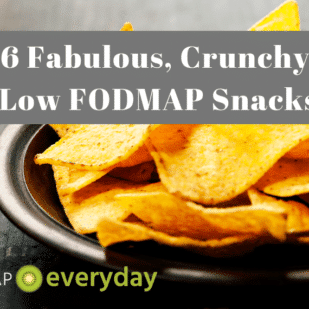We bet you are asking yourself, what can I eat on the low FODMAP diet? It is the #1 question that we hear folks ask. This article is going to take you through the answers step-by-step, so that you will never be hungry – and be able to keep Your Irritable Bowel Syndrome (IBS) triggers at bay.
If you are new to FODMAP Everyday®, then let us introduce you to our motto: We Teach You How To THRIVE on the Low FODMAP Diet!
What You Can & Cannot Eat On The Low FODMAP Diet
The low FODMAP diet eliminates and restricts certain types of carbohydrates. They are categorized as, Oligosaccharides, Disaccharides, Monosaccharides and Polyols (the O-D-M and P of the acronym). The linked articles will take you to lists that dive deep into each type of FODMAP.
What you need to know immediately is that all proteins and all fats are okay to eat while on the low FODMAP diet, from a FODMAP perspective.
You can eat meat and poultry, fish and tofu, oils and butter, many hard cheeses, fruits, vegetables, nuts and seeds. You can jump to our Low & High FODMAP Food Lists, but we suggest that you read this article beginning to end in order to get the most out of your low FODMAP journey.
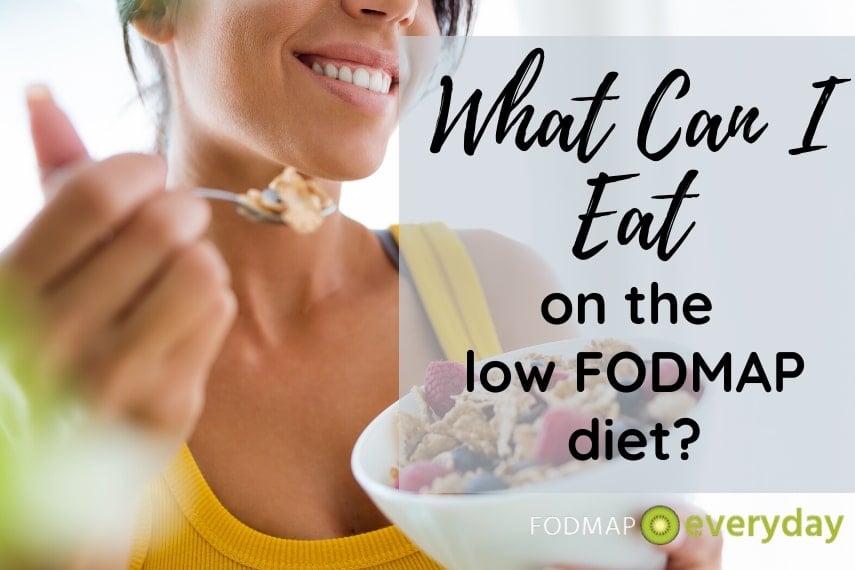
Many Roads Lead To Success With The Low FODMAP Diet
There are many ways to succeed on the low FODMAP diet, and they are all predicated on learning what you can and cannot eat. Books, apps, high and low FODMAP lists and Shopping Lists can guide you, as can courses and recipes to name a few but, and this is a huge but, their validity as helpful sources rests on whether they are created with accurate and science-based data.
Low FODMAP Resources Are Only As Good As Their Foundation
You know the adage, “Give a man a fish, and you feed him for a day. Teach a man to fish, and you feed him for a lifetime”? We are going to teach you how to fish. We have lists and articles and recipes for you, but we also want to educate you so that you will be able to recognize, whether you are looking at an ingredient list on a label, a restaurant menu, a pile of raw ingredients or a recipe, whether it is low FODMAP or not.
We are going to teach you how to identify what you can eat on the low FODMAP diet, anytime, anywhere.
It is not as easy as looking at titles and labels. There are many recipes in books and online and Pinterest boards that say they are low FODMAP, but they are not. Don’t worry! We are going to teach you how to tell whether something is low FODMAP.
Foundations First
Researchers at Monash University in Melbourne, Australia developed the low FODMAP diet. Dr. Sue Shepherd, who was at Monash at the time, subsequently departed and developed FODMAP Friendly.
Both Monash and FODMAP Friendly lab test raw ingredients as well as lab test and certify commercially prepared products. They have established themselves as originators of the diet and as highly reputable resources.
Credible and reliable FODMAP educators around the world use these two resources as their foundation. Check and validate your resources.
FODMAP Everyday® is FODMAP Friendly Accredited, as is Dédé Wilson, our co-founder, herself. Dédé is also Monash University Low FODMAP Diet trained as are the majority of our Success Team Registered Dietitians, who write our science-based articles. Rest assured that the content we create is compliant with the data that the scientists and researchers who developed the diet, and who continue to conduct original research, put forth. We work closely with both FODMAP Friendly and Monash University and welcome any questions you may have about our content.
Here is an article for you on how we create low FODMAP recipes.
The Low FODMAP Diet Has Three Parts
The low FODMAP diet is comprised of a short Elimination Phase, a secondary Challenge Phase (sometimes called re-introduction) and a third phase that we call Integration.
Unfortunately, we hear people, even doctors, talking about the “low FODMAP diet” when what they are really actually talking about is the initial, restrictive Elimination Phase. The low FODMAP diet is a learning diet and all the phases must work together – in order, as they are built upon one another.
So, when you ask, “what can I eat on the low FODMAP diet?”, the answers might vary depending on where you are in the diet and are also dependent on what your unique digestive responses are to individual foods.
The great majority of low FODMAP information is geared towards the Elimination Phase, which means most recipes and recommendations will be conservative and least likely to trigger IBS symptoms. However, always remember that the ultimate goal is to eat as broadly as possible for ultimate gut health.
Our article on What Is A Low FODMAP Serving Size? will be helpful.
Smartphone Apps for The Low FODMAP Diet
It is our opinion that everyone who is following the diet should have both the Monash University Low FODMAP Diet smartphone app and the FODMAP Friendly Low FODMAP Diet smartphone app. Again, to reiterate, these are the ONLY two entities at this time who are lab testing raw foods and prepared products for FODMAP content and publishing the results.
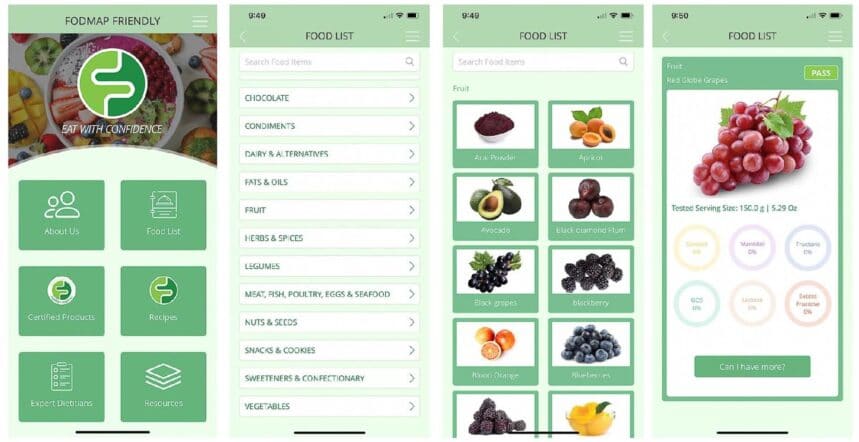
With these apps at hand you will have the most up to date FODMAP data at your fingertips.
We think you need both apps. Monash has tested more raw ingredients; FODMAP Friendly has lab tested more finished products and also provides the percentage break-down of individual FODMAPs.
Neither Monash nor FODMAP Friendly license their APIs (Application Programming Interface). Simply put, this means that their research is not made available to other app developers.
Every other FODMAP app (like the free ones) is copying their info – it is not original research – and the information is almost always out-of-date, incomplete and/or presented in a way that does not give you the information you need to learn about and follow the low FODMAP diet successfully.
If you are using incorrect or incomplete information, you are not following the diet – and you are not giving yourself the best shot at success.
Supermarket Scanner Apps
There are two scanner apps that we want to call your attention to, Fig and Spoonful!
Low FODMAP Supermarket Scanner App – FIG!
Fig (which stands for Food Is Good) is a scanner app that can be very helpful when grocery shopping. We do suggest that you use it in conjunction with the Monash University app, which the Fig developers recommend as well.
Fig allows you to scan barcodes right in the supermarket and get information on ingredients and the product’s suitability for you while following the low FODMAP diet. You can tailor the app to help you with your own needs. If you are sensitive to additional foods such as dairy or have a peanut allergy, or want to avoid histamines or added sugar, or you just don’t like pork or added gums, the Fig app can be completely customized.
If you are sensitive to additional foods such as dairy or have a peanut allergy, or want to avoid histamines or added sugar, or you just don’t like pork or added gums, the Fig app can be completely customized.
The developers work with Monash trained Registered Dietitians and the product is being constantly updated and improved.
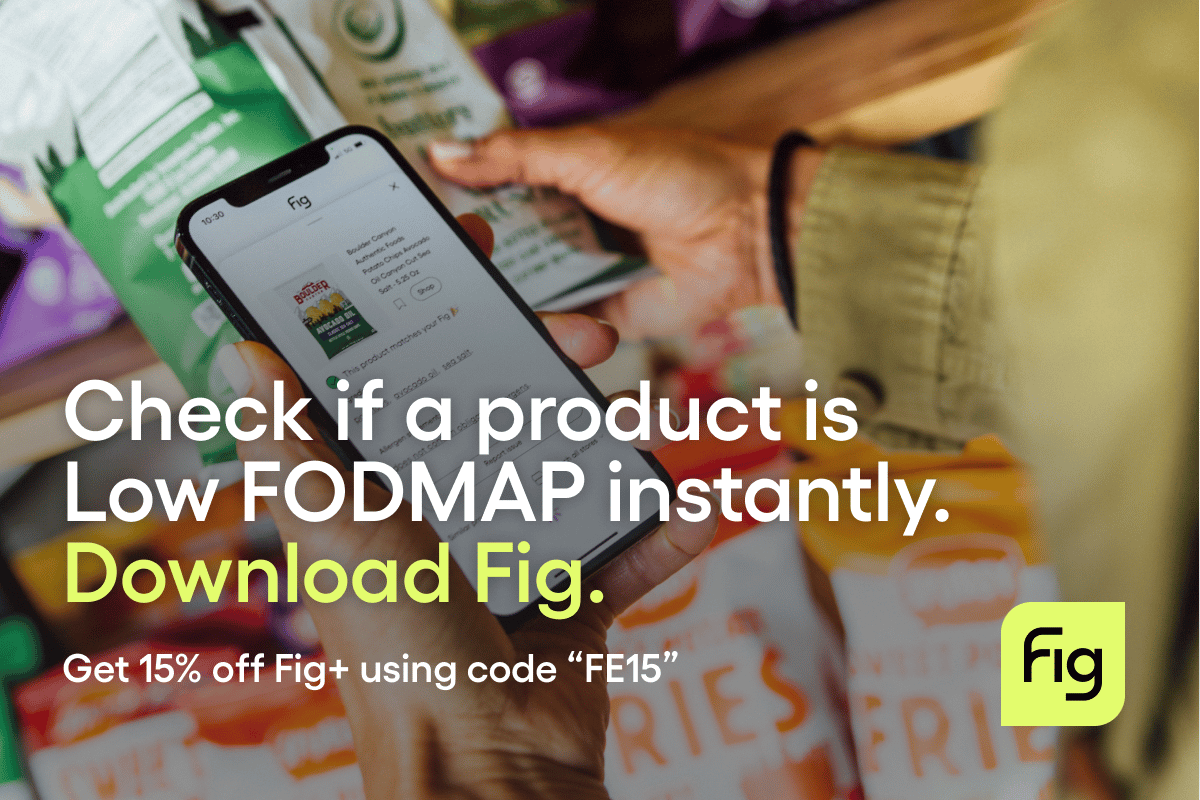
The app can be helpful for beginners who want quick answers while shopping.
Low FODMAP Supermarket Scanner App – Spoonful!
Spoonful! is another scanner app that can be helpful, and this, too, is meant to be used in conjunction with the Monash University app.
It allows you to scan barcodes as you shop. The Spoonful! developers work with Monash trained Registered Dietitians (like our very own Vanessa Vargas) and the product is being constantly expanded and improved.
Our caveat, as stated above, is that it must be used along with the Monash University Low FODMAP Diet app to understand some of the nuances and complexities of the diet.
High & Low FODMAP Food Lists
We are often asked for simple downloadable high and low FODMAP food lists – so we have created one based on the information provided in the Monash University and FODMAP Friendly Apps. They do NOT provide the level of necessary detail regarding low FODMAP serving sizes that are essential for truly following the diet. They are meant as a quick reference only. Please read the disclaimers on the lists themselves for full details. But if you want a simple view of where certain ingredients fall – these may be of some help.
We have a free PDF download for you that provides you with a list of low FODMAP foods and high FODMAP foods. CAVEAT: Some foods are on both lists. This is because, with apples for instance, that there is a low FODMAP lab tested amount (enough for a snack with PB!) but they become high FODMAP very quickly. The goal of the diet is to eat as broadly as possible, for your gut microbiome health. Because of this, if a foodstuff has a low FODMAP lab tested amount, then it is included on our low FODMAP list. Work with your dietitian for best chance of success with the diet. This is our recommendation and that of the diet’s developers.
Shopping Lists
Our Shopping Lists are unparalleled and offer an additional way of learning what you can eat on the low FODMAP diet.
Monash trained Registered Dietitian Vanessa Vargas has been part of our Success Team from the start. She has curated our Shopping Lists and has reviewed thousands of products found on your everyday supermarket shelves and determined them to be low FODMAP. She has spoken to manufacturers and has helped us assemble the best Low FODMAP Shopping Lists that you will find anywhere.
Self Education! Books, Courses & Groups
In conjunction with working with a FODMAP trained RD, there are many resources that provide support.
Looking For A Low FODMAP Diet Book?
We are biased. We think Dédé’s book co-written with RDN Kate Scarlata is a fantastic book.
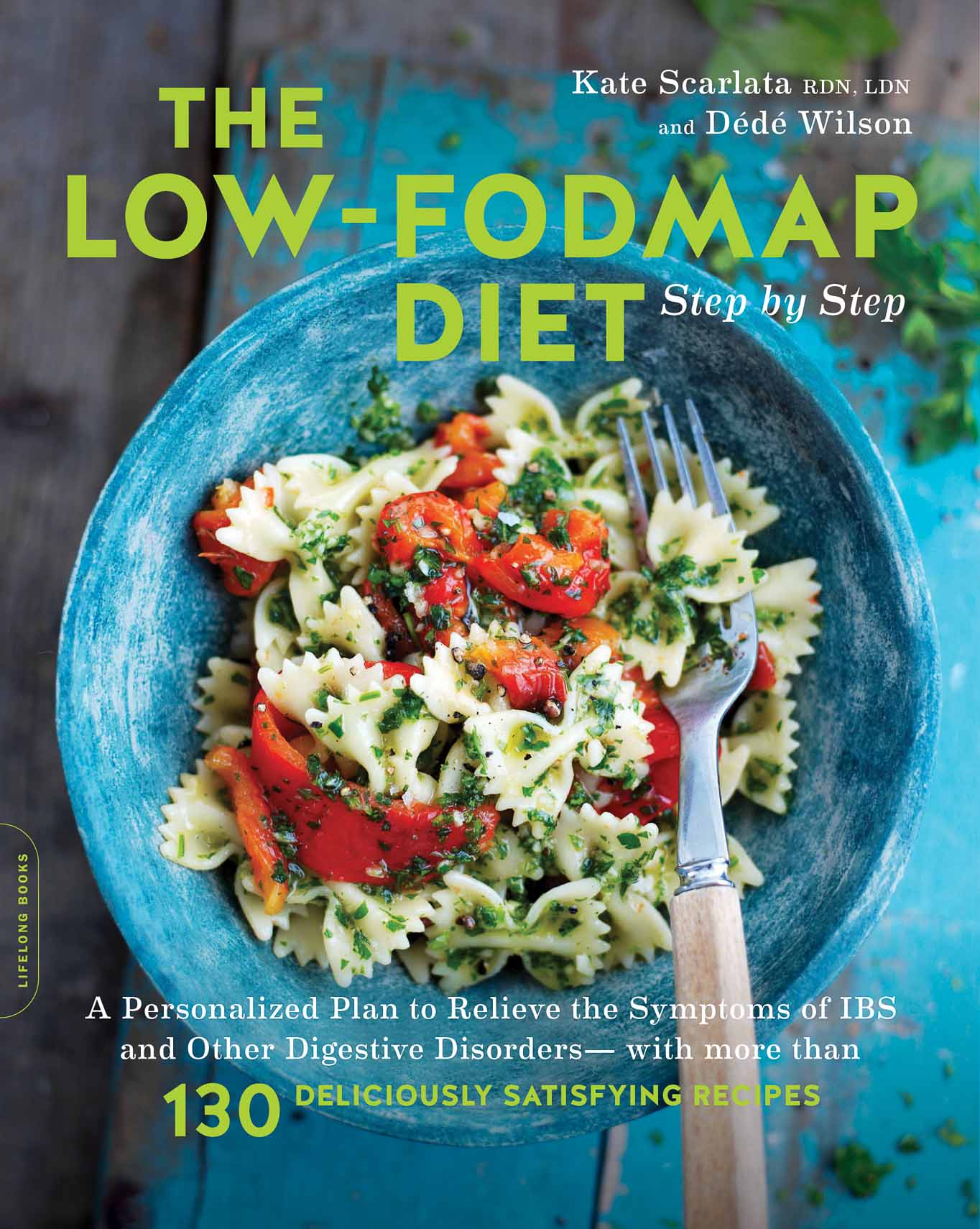
Some folks like to have an actual book with them on their bedside table or in the kitchen. The book contains evidence-based medical advice and original recipes for meals that will satisfy the whole family, whether they are following the diet or not. The Low FODMAP Diet Step-by-Step offers real-life, holistic solutions for those living with IBS. The chapters take you from diagnosis through Elimination, Challenge and Integration and includes recipes from soup to snacks, breakfast, lunch and dinners, one-pot meals and desserts.
Monash University Patient Course
Our team of RDs, and the originators of the low FODMAP diet, recommend that the diet be undertaken with the aid of a dietitian. In conjunction, there are self-guided courses that you can complete on your own schedule.
We highly recommend the Monash Patient Course. This is a very thorough way to learn about the diet.
Read our review of the Monash Low FODMAP Patient Course here.
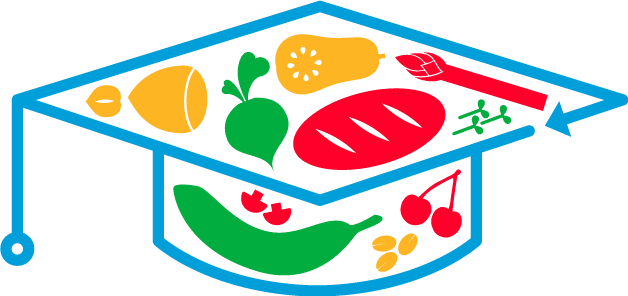
The course covers all the essential topics including:
- The importance of getting an accurate diagnosis of IBS.
- What are FODMAPs and where are they found?
- How to implement Steps 1, 2 and 3 of the FODMAP diet.
- Understanding whether your IBS symptoms are sensitive to FODMAPs.
- What to do if your IBS symptoms do not improve on a low FODMAP diet
- Other therapies to help manage IBS symptoms.
Facebook Groups
There are many FODMAP focused Facebook groups, and like anything, some are better than others. We think ones that are moderated and administered by FODMAP experts are best. One caveat when it comes to group on Facebook, Reddit and elsewhere: your relationship to FODMAPs is unique and asking questions about whether others tolerator a food is not necessarily going to apply to you. Use the groups as a way to know you are not alone and to find recipes and FODMAP related info. We do not suggest that you use online groups for medical information.
Here are a few Facebook groups that we love.
- Low FODMAP for FOODIES – if you are a real cook and baker, come check this food focused group out.
- Our Uncensored Low FODMAP Recipes group has looser rules and is best for those experienced with the diet and in the kitchen.
- Looking for general support? Come join Low FODMAP Diet Support.
- And if you are in the U.S. the USA Low FODMAP Products group is a fantastic resource.
International Registered Dietitian Directory
We have an International Registered Dietitian Directory of dietitians who have self-identified themselves as working with the low FODMAP diet. There are a few things to consider when perusing the list: first of all, many RDs will do phone or Skype sessions, so you do not necessarily have to limit yourself to someone local. Secondly, as about specific experience and expertise.
If you also have IBD or SIBO, find a RD who understands your concurrent medical issues. Also, many RDs will have specific FODMAP training. For instance, ask about whether they have completed the Monash Training or that from King’s College.
Certified Low FODMAP Foods
Both FODMAP Friendly and Monash University have programs where a food manufacturer can have a food lab certified by one company or the other and you, as the consumer, will be able to tell by the icon on the label.
Below are the two icons that denote that a product has been lab certified as low FODMAP. TRUST these icons! You might spy a high FODMAP food or unfamiliar ingredient on the label, such as apple juice concentrate, sprouted chia seeds or “spices”, or some other food that is not listed as low FODMAP on the apps. Don’t worry! Products sporting these icons have been lab tested as low FODMAP. Period.
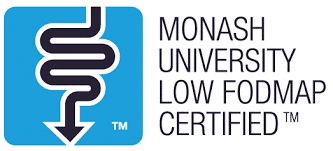
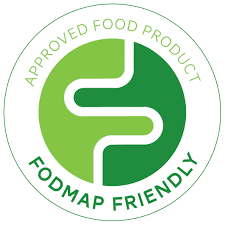
We have an article to help as well: How To Read A Low FODMAP Certified Food Product Label.
One caveat: there are a couple of companies who have had their products certified, but for whatever reason, have chosen not to include the icons on their products. Enjoy Life, for instance, has several products that are certified low FODMAP, but you have to visit their website to learn the fact.
How To Read Ingredient Labels
What if a prepared product is not certified? There will always be far more products on the shelves that are not certified than are, so you have to learn how to read ingredient labels. Again, our Shopping Lists are a great way to go, since all of the items listed have been vetted by a Monash trained RD.
But what if you are standing in the supermarket aisle looking at a label and have a question. Here’s what we suggest:
- Read these articles, so that you have background information:
- Have your Monash and FODMAP Friendly apps at hand to check ingredients.
The Takeaway
The low FODMAP diet is nuanced and complex, but we know that you want to know what you can eat. Unfortunately, there is no shortcut, however, after you spend some time with the smartphone apps and our recommended resources, slowly but surely you will absorb a fair amount of information and you will get better and better at knowing what you can eat. Here are our suggestions in a handy list:
- Download both the FODMAP Friendly and the Monash University smartphone apps.
- Work with a FODMAP trained RD.
- Reach out to a FODMAP trained dietitian like Joe Leech and his team. Work from home with the experts, either with his courses or 1 on 1.
- Check resources for expertise and credibility.
- Self-educate! FODMAP Everyday® has many free resources for you.
- Take advantage of self-driven courses such as the Monash Patient Course.
- Know that the diet is a learning process! Take your time; there is light at the end of the tunnel, and you CAN be symptom free!
- And if you are on a tight budget, or just looking for a more economical approach, we show you how you can still follow the diet.
This article was originally published on FODMAP Everyday.
